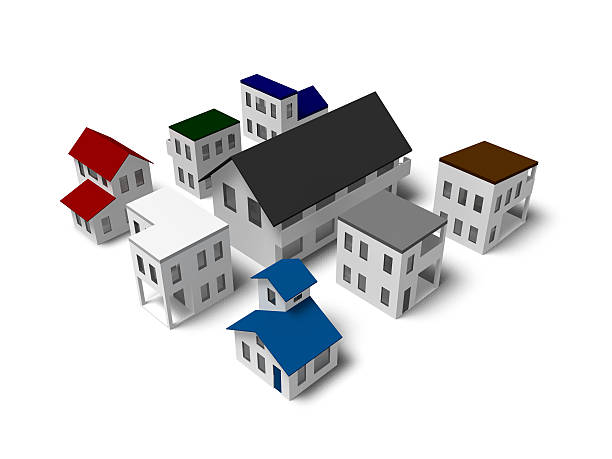For investors seeking consistent income and long-term growth, multifamily real estate continues to be one of the most attractive asset classes. Unlike single-family homes, which depend on just one tenant, multifamily properties spread risk across multiple units. This means if one unit becomes vacant, the others can still generate cash flow.
Another advantage is scalability. Managing four units in a single building is often easier, and more cost-effective, than managing four separate single-family homes scattered across different neighborhoods. This efficiency makes multifamily real estate a favorite among both beginners and seasoned investors.
Still, not all multifamily properties are created equal. There are many variations, ranging from small duplexes to high-rise apartment buildings with hundreds of tenants. Each comes with unique investment considerations, management requirements, and profit potential. By exploring the different types of multifamily properties, you’ll be better equipped to choose the right fit for your goals.
12 Types of Multifamily Properties
1. Duplex
A duplex has two separate housing units under one roof, often with their own entrances, kitchens, and living spaces. For new investors, duplexes are appealing because they’re affordable compared to larger properties. One common strategy is “house hacking,” where the investor lives in one unit while renting out the other to offset their mortgage. Duplexes are usually found in suburban neighborhoods and are a practical stepping stone into multifamily investing.

2. Triplex
A triplex expands the concept of the duplex by adding an additional unit. Investors benefit from having three income streams while still keeping property management relatively simple. Triplexes are often purchased by small-scale landlords or investors looking to increase cash flow without jumping into the complexities of larger apartment buildings.
3. Fourplex (Quadplex)
Fourplexes are popular because they offer four rental units yet still qualify for residential financing instead of commercial loans. This makes them accessible to many investors who want to scale up without taking on the challenges of larger multifamily properties. They’re also ideal for those who want to build a small portfolio quickly. Many investors use fourplexes as a way to maximize income while still living in one of the units themselves.

4. Townhouse-Style Multifamily
Townhouses aren’t always considered multifamily, but when multiple units are grouped together in a shared development, they can function as one. Investors often purchase blocks of townhouses or rent them individually. Tenants like them because they offer more privacy and space compared to apartments, making them popular with families.
5. Apartment Buildings (Low-Rise)
Low-rise apartments usually have between five and twenty units and often lack elevators. They are common in suburban neighborhoods and provide a manageable middle ground between small properties and large complexes. Investors are drawn to them for their steady rental demand and lower operating costs compared to mid- or high-rise buildings.
6. Mid-Rise Apartment Buildings
Mid-rise apartments typically feature multiple stories with elevators and 20 to 100 units. These buildings are often located in growing cities or suburban hubs where population density is increasing. They appeal to working professionals who want modern amenities but don’t need luxury high-rises. For investors, mid-rises offer strong income potential, but professional property management is usually required to handle tenant volume.

7. High-Rise Apartment Buildings
High-rises are the giants of multifamily real estate. With hundreds of units spread across many floors, they’re most common in major metropolitan areas. These properties often include high-end amenities like gyms, pools, and concierge services. While they generate substantial income, they also come with significant challenges: high purchase prices, complex management, and strict regulatory requirements. Only experienced investors or large real estate firms typically handle high-rises.
8. Mixed-Use Multifamily Properties
Mixed-use developments combine residential and commercial spaces, such as retail stores or office spaces on the lower floors with apartments above. These properties diversify income sources, reducing risk if one sector experiences a downturn. For example, even if retail rents decline, residential tenants still provide steady cash flow. However, managing mixed-use properties requires expertise in both residential and commercial leasing, which can be more complex than traditional multifamily housing.

9. Student Housing
Located near colleges or universities, student housing provides consistent demand year after year. Investors can often charge per bedroom rather than per unit, boosting rental income. These properties may also be furnished and rented on shorter-term leases aligned with the academic calendar. While lucrative, student housing comes with challenges such as higher tenant turnover and greater wear and tear on units.
10. Senior Housing
As the population ages, demand for senior housing continues to grow. Properties in this category range from independent living apartments to assisted living facilities. Investors are attracted to the stability of this market, especially in regions with large retiree populations. However, operating senior housing can require specialized management and, in some cases, licensing to provide certain services.
11. Garden-Style Apartments
Garden-style apartments are low-rise buildings spread out across landscaped grounds, often with outdoor space like courtyards or walking paths. These complexes are especially common in suburban markets. Tenants like them because they provide a community feel and more green space compared to urban apartments. Investors benefit from steady rental demand, especially among families and young professionals who value affordability and space.

12. Luxury Multifamily Properties
Luxury apartments or condominiums target high-income tenants. These properties often include top-tier amenities such as rooftop lounges, smart home features, and premium finishes. While maintenance and operating costs are higher, tenants are willing to pay significantly more for the lifestyle offered. Investors in this category focus on prime locations and market demand for upscale living.
Final Thoughts
The wide range of multifamily property types means there’s something for every investor, from those starting small with a duplex to those managing sprawling apartment complexes. Each property type carries its own advantages, challenges, and strategies, but they all share one common feature: the ability to create steady, reliable income streams.
If you’re curious about diving deeper into multifamily real estate, Dwanderful is a fantastic place to start. Dwan Bent-Twyford, a veteran real estate investor and podcast host, has built a community around teaching others how to succeed in real estate. On her site, you’ll find helpful resources, including a free book called Real Estate Lingo, which breaks down industry terms into everyday language, and a paid guide, Five Pillars of Real Estate Investing, for those ready to develop a comprehensive strategy.
Want something more interactive? Try Dwanderful’s fun quiz game, which shows you how you could generate six figures in the next six months. Whether you’re buying your very first property or adding to an existing portfolio, the quiz takes less than a minute and provides a unique way to think about your financial future. Contact us now!
Frequently Asked Questions
1. What qualifies as a multifamily property?
Any residential building with more than one separate housing unit qualifies as a multifamily property. Examples range from duplexes and fourplexes to larger apartment complexes and mixed-use buildings.
2. Why do investors prefer multifamily properties over single-family homes?
Multifamily properties spread risk across multiple units. If one tenant moves out, the other units still generate income. They also offer economies of scale, making property management and maintenance more cost-effective.
3. How do multifamily properties differ in terms of financing requirements?
Smaller multifamily homes (two to four units) often qualify for traditional residential mortgages, while larger ones require commercial financing. Commercial loans typically demand higher down payments, stricter qualifications, and larger reserves, but they also allow for bigger opportunities.
4. Are multifamily properties suitable for first-time investors?
Yes, especially smaller properties like duplexes or triplexes. These allow beginners to live in one unit while renting out the others to help cover costs. As investors gain experience, they can scale into larger properties that require more advanced strategies.



